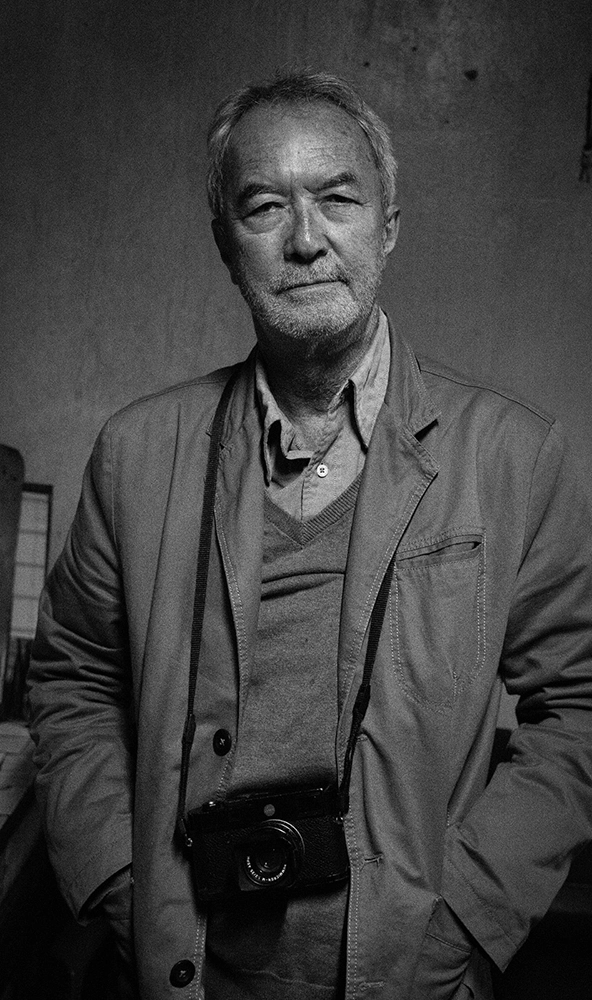At first, I wanted to be a painter, and I pursued this path for 17 years. In my third year of
middle school, a painter came to present his profession, and I decided to leave school
to follow this path. My father, who was a merchant, would have preferred me to become
a grocer like him. He cut oA my financial support, so I left home for the “big city,”
Antananarivo, with my childhood friend Léon Fulgence. In a coAee plantation, we made
a blood pact, promising each other to become artists—he as a painter and I as a
photographer. We experienced poverty and hunger in Antananarivo.
After returning to my hometown following the political events of 1972, I worked in the
family grocery store. After some time, to show my determination to my father, I drew a
counterfeit banknote that he mistook for a real one. He was furious, but he also realized
I had artistic potential.
After doing various small jobs, I was able to buy an enlarger and, in 1974, opened my
first photo lab. I worked on weddings, baptisms, and family portraits to support my
family. I used a Soviet Zenit E camera with a 50mm lens, a gift from my sister. My first
camera was my father’s old Kodak 6x9, which I used for a long time. I also used contact
sheets as models for my paintings, and sometimes even postage stamps, as magazines
and books rarely reached the provinces.
At the same time, I developed my personal photography, following in the footsteps of my
African colleagues Seydou Keita and Malick Sidibé. Today, I have achieved my dream
and have been a photographer for nearly 50 years.
Statement
My name is Pierrot Men, and I'm a Madagascan artist-photographer with a passion for
my country, Madagascar, which is rich in human and natural diversity. Photography is
not just my job, it's my life. I was born here, I grew up here, and the whole essence of my
being is deeply rooted in the culture and landscapes of this fascinating island. My
passion for photography finds its purest essence in capturing people in their
environment, at the heart of the everyday lives of the people who live in my country.
My artistic approach stems from an intimate connection with the people of
Madagascar. Every click of my camera is an act of love and a testimony to the Malagasy
soul, an immersion in the everyday experiences that shape our lives. By photographing
the people of my country, I feel as if I am photographing myself, frozen in situations that
I have experienced myself. It's an act of personal exploration as much as it is a visual
testimony to the richness of our culture.
My favourite tool is a 35mm lens, which allows me to get closer to their intimacy, to feel
the warmth of their smiles, the depth of their eyes and the sincerity of their gestures.
Each shot becomes a moment frozen in time that reveals the very essence of their
existence.
When I set out to find my subjects, I don't have any predefined themes in mind. I let my
emotions guide me. I photograph everything that evokes a deep feeling in me, whether
it's the bright joy of a bustling market, the melancholy of a gaze lost in the horizon or the
palpable inspiration of a craftsman creating his art with passion... Each image I capture
is imbued with the vital energy of Madagascar, with the love I have for this country and
its people.
Beyond the lens of my camera, there's communication. I like to immerse myself in the
daily lives of the people I photograph. I take the time to get to know them, to listen to
their stories, to understand their dreams and struggles. These conversations, often
fleeting but always meaningful, allow me to create a bond, a connection that
transcends the camera lens. It is in these moments of sharing that I discover the true
essence of my subjects, which makes each image even more precious.
I admit that writing is not my strong point. My photographic language finds its true
expression through my camera. Each image I capture speaks for me, tells a silent story.
In conclusion, my images are born of this fusion between my love for Madagascar, my
deep connection with its people and my ability to capture the essence of the human
being through my lens. Each photograph is the result of a passionate exploration, a total
immersion in the daily life of my country. Each one tells a story, not only of those I have
photographed, but also of myself, of my own experience as a Malagasy individual. This
is how my images come to life, through the prism of my lens, freezing the Malagasy soul
in eternal moments.
